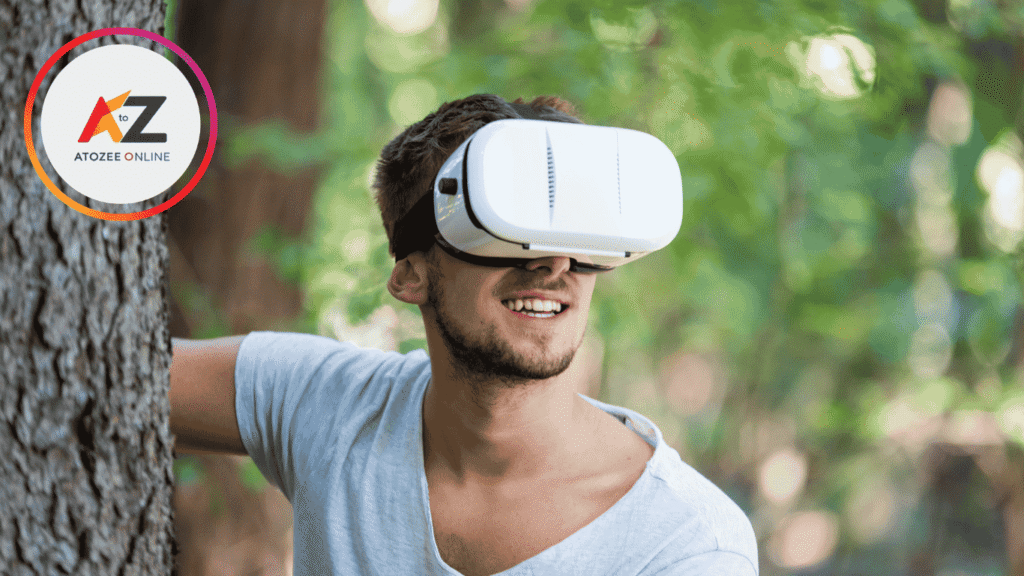What is Augmented Reality? A Complete Guide for Beginners
Introduction: Understanding Augmented Reality
Augmented Reality (AR) is one of the most fascinating and rapidly evolving technologies of the 21st century. Unlike Virtual Reality (VR), which immerses you in a fully digital world, AR enhances your perception of the real world by overlaying digital elements onto your surroundings. Whether you’re using AR to try on clothes virtually, play interactive games, or navigate city streets, this technology is revolutionizing the way we interact with information and our environment.
In this detailed guide, we’ll explore what Augmented Reality is, how it works, where it’s used, its benefits and challenges, and what the future holds for AR.
What is Augmented Reality (AR)?
Augmented Reality (AR) is a technology that blends digital content — such as images, audio, and 3D models — with the real-world environment in real time. It uses devices like smartphones, tablets, AR glasses, or specialized headsets to display interactive digital content over what you see in the real world.
Key Characteristics of AR:
- Real-time interaction
- Blends digital and physical worlds
- Responsive to user input and environment
- Accessible through smart devices
Unlike VR, which replaces the real world entirely, AR adds layers to it. This makes AR useful in both entertainment and practical applications like navigation, education, healthcare, and retail.
How Does Augmented Reality Work?
AR systems use a combination of hardware and software components to deliver interactive experiences. Here’s a simplified breakdown of how it works:
1. Hardware Components
- Display Devices: Smartphones, tablets, AR headsets (e.g., Microsoft HoloLens), and smart glasses (e.g., Magic Leap, Google Glass).
- Sensors and Cameras: These scan the environment to detect objects, surfaces, and movement. They allow the AR system to understand spatial relationships.
- Processors: They handle data processing, graphics rendering, and image recognition.
- Input Devices: Touchscreens, voice commands, gestures, or eye-tracking for user interaction.
2. Software Components
- AR SDKs (Software Development Kits): Examples include AR -Kit (Apple), AR-Core (Google), and Vuforia. These tools help developers build AR experiences.
- SLAM (Simultaneous Localization and Mapping): This technology helps the AR system understand its surroundings in 3D.
- Image and Object Recognition: Allows the AR system to identify objects or markers (like QR codes) and trigger digital overlays.
Types of Augmented Reality:
AR comes in several forms, each offering unique ways to interact with the real world:
- Marker-Based AR
Uses a visual marker (like a QR code) to trigger the digital overlay.
Common in museum exhibits or AR print ads. - Markerless AR (Location-Based)
Uses GPS, accelerometer, and compass data to provide AR content based on your location.
Used in apps like Pokémon GO or AR navigation systems. - Projection-Based AR
Projects light onto surfaces to display digital content.
Users can interact with the projection, like in virtual keyboards. - Superimposition-Based AR
Replaces the original view with an augmented one.
Common in medical imaging where real body parts are enhanced with digital labels. - Wearable AR
Delivered through smart glasses or headsets.
Offers hands-free operation, ideal for industrial or surgical applications.
Real-World Applications of Augmented Reality
AR is already being used across multiple industries, and its potential is only growing. Here’s a look at how various sectors are embracing AR:
- Retail and E-commerce
Virtual try-ons for clothing, glasses, and makeup.
Visualize furniture in your home with apps like IKEA Place.
Interactive product displays in stores. - Education
AR textbooks and apps provide immersive learning experiences.
Students can explore 3D models of the solar system, human anatomy, or historical landmarks.
Encourages engagement and deepens understanding. - Healthcare
AR assists in surgery by displaying internal organs and structures in real time.
Medical training with AR simulators.
Patient education using interactive models. - Gaming and Entertainment
Games like Pokémon GO, Ingress, and Harry Potter: Wizards Unite.
AR features in mobile apps and camera filters.
Live events with interactive AR experiences - Manufacturing and Industry
Real-time data visualization for machinery and equipment.
AR-assisted assembly and maintenance.
Worker training in complex environments. - Real Estate and Architecture
Visualize buildings before construction.
Interior design previews.
Virtual walkthroughs for property listings.
Benefits of Augmented Reality:
AR brings numerous advantages, both for businesses and users:
- Enhanced User Engagement: Makes experiences more interactive and memorable.
- Increased Efficiency: Speeds up tasks in training, design, and maintenance.
- Improved Learning: Supports immersive education and retention.
- Convenient Shopping: Lets users try before they buy.
- Competitive Advantage: Helps brands stand out with innovative experiences.
Challenges and Limitations of AR:
Despite its potential, AR still faces several challenges:
- High Development Costs: Creating high-quality AR experiences can be expensive.
- Privacy Concerns: Collecting real-world data raises ethical and legal questions.
- Hardware Limitations: Not all users have access to AR-capable devices.
- Battery Drain: Continuous use of sensors and processing drains battery life.
- User Adaptability: Some people may find AR difficult or unnecessary to use.
AR vs. VR vs. MR: What’s the Difference?
| Feature | Augmented Reality (AR) | Virtual Reality (VR) | Mixed Reality (MR) |
| Real World Interaction | Yes | No | Yes |
| Device Type | Smartphone, AR glasses | VR headsets | MR headsets |
| Immersion Level | Moderate | Full | High |
| Example | Pokémon GO | Oculus Rift Games | Microsoft HoloLens |
- AR adds to reality.
- VR replaces reality.
- MR merges real and virtual elements interactively.
The Future of Augmented Reality:
The future of AR looks incredibly promising. With the expansion of 5G, AI integration, and wearable tech, AR is expected to become more accessible, powerful, and seamless. Here are a few trends to watch:
- AR Glasses Going Mainstream: Apple, Meta, and Google are investing in lightweight AR eyewear.
- AR in Remote Work and Collaboration: Virtual meetings with 3D avatars and digital workspaces.
- Smart Cities and AR Navigation: Enhancing urban exploration and public services.
- AR in Marketing: Brands creating highly personalized, immersive advertisements.
Conclusion:
Augmented Reality is more than just a buzzword — it’s a powerful tool that’s transforming how we learn, shop, communicate, and play. From education and healthcare to gaming and industrial use, AR is proving its worth across every major industry. As technology evolves and adoption increases, AR is set to become a standard part of our daily lives.
If you’re a business owner, developer, student, or just a curious mind, now is the time to explore how AR can benefit you. This blend of the physical and digital world is only just beginning — and its future is incredibly exciting.


